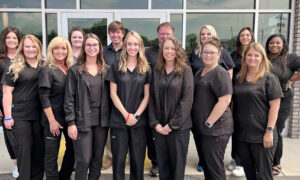Aaron Lech, OD, FAAO, owner of ClearVue Eye Care in Roseville, Calif., outlines how he developed a full portfolio of medical and eyecare services and specialties that serves a broad and growing patient base.
Build a Full Portfolio of Services
Add Associates, State Goals
Add Instrumentation, Elevate Care
Building a comprehensive practice allows you to offer a full range of eyecare services to meet all patient needs. In addition, this insulates a practice from economic and demographic swings that can take an economic toll, says Dr. Lech.
When taking on associates, look for synergies, he recommends. Seek associates who offer additional services that may generate unexpected opportunities.
By adding associates and expanding specialties, Dr. Lech was able to concentrate on his own passion, medical eyecare.
“This process takes time, in our case about 10 years,” he says. The payoff is that the practice derives over 60 percent of revenues from medical eyecare, well above national averages.
When adding associates and expanding eyecare services, articulate your practice vision and goals from the start, but also to allow time for your plan to develop, Dr.
Lech advises. The first associate he added provided similar services to his, yet drew from a different demographic of patients
with different eyecare issues. This pointed
to new opportunities in adding neuro-rehabilitation and vision therapy services.
Another key factor: Determine the professional and personal goals of your associates and be flexible in allowing them to reach a work-life balance. Develop mutually beneficial relationships that allow like-minded doctors to grow in their personal and professional aspirations. In this way, the relationship functions much more like a partnership, only with defined clinical and operational roles. This may slow down reaching your practice goals, but in the end it results in a better, more satisfying enterprise where everyone feels they are on the same winning team.
Set a road map for the growth of your practice–and commit to adding instrumentation when you hit specific sign posts. With major investments, doctors need to see beyond the immediate ROI. The decision to acquire a new instrument is based on the higher level of care it permits, and that quality of care is part of the ROI you need to assess.
Consider also a new instrument’s ease of use by ODs and staff, and allow time for training that may be available from manufacturers. Hiring is affected, too, since you need staff with the aptitude to operate high-tech instruments.
In the end, adding cutting-edge instrumentation with comprehensive training in its use will help you to achieve practice growth goals.
Aaron Lech, OD, FAAO,, owns ClearVue Eye Care in Roseville Calif. To contact him: drlech@clearvue.org

























